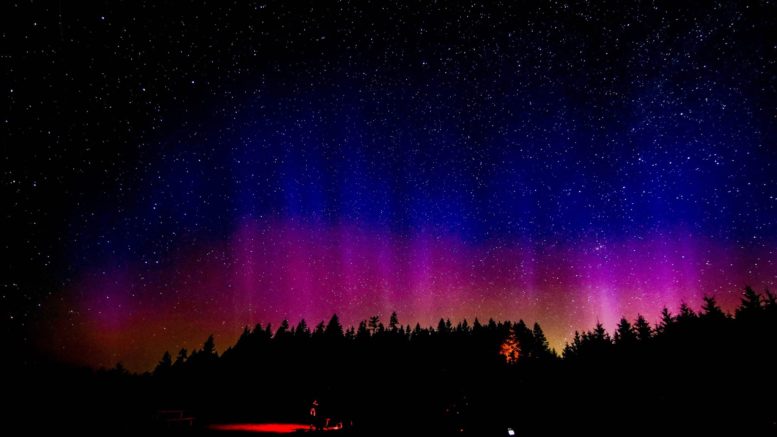Seeing the Aurora Borealis in the Pacific Northwest can be done! Whether it be Crater Lake National Park in Oregon, Craters of the Moon National Monument in Idaho or Roosevelt Lake in Washington, the Northern Lights are indeed visible.
It just requires that there was a large enough coronal discharge and going to a dark sky.

In order for there to be aurora, there has to be sunspots and solar activity. Moreover, those sunspots have to erupt with enough plasma that they plasma intersects with the Earth’s rotation. We will be writing articles about the affect of the solar winds on the earth and describing what the Aurora is.

Solar Cycles
The sun runs on an 11 year cycles, which means that every 11 years there are solar highs. 2019 is going to be a solar minimum, so it looks like 2024 might be the next solar maximum. The solar cycle affects and dictates the likelihood of large solar activity.
To see the Aurora Borealis, go to a location with dark skies and wait. If the KP for the night is 6 or above, then the Aurora could be visible. Cameras are better at picking up the faint lights than the human eye is. The best times to see would be September or March.
When we saw the Aurora Borealis, it was a day in May with no moon. There were no clouds, and it could not be a better night for astronomy! There were very few people there so there was room to move around to take photos at different areas. The first indication of auroral activity was the green light as shown in the first photo below.

Later in the night, the Aurora Borealis evolved into dancing columns of black/brown light. The photos revealed the following light pattern.

Resources To Track The Northern Lights
30 Minute Forecast from NOAA
3 Day Forecast from NOAA
Daily Forecast

Leave a comment